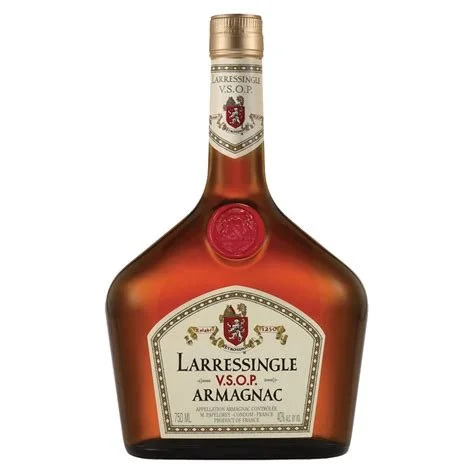ARMAGNAC
Rustic Depth from Gascony’s Oldest Still
Armagnac is a storied French brandy from Gascony, celebrated for its earthy complexity, deep texture, and artisanal production. Distilled just once in traditional column stills, Armagnac retains more of the base wine’s character—delivering a spirit that’s bolder, spicier, and more rustic than its Cognac cousin. Long aging in local oak casks imparts rich notes of dried fruit, baking spice, and subtle rancio, making Armagnac a favorite among connoisseurs seeking authenticity and depth.
Key Characteristics
Armagnac is typically fuller and more robust than Cognac, with a textured mouthfeel, pronounced spice, and a long, warming finish. Each cru and grape variety adds nuance, from floral to savory to boldly wood-aged.
Style
Fruit-based, oak-aged brandy
Body
Medium to full
Alcohol
40–48% ABV
Base Grapes
Ugni Blanc, Folle Blanche, Colombard, Baco Blanc
Typical Flavors
Prune, fig, orange peel, nutmeg, clove, caramel, walnut, tobacco, leather, rancio
Origin & History
Produced in the Gascony region of southwest France, Armagnac is France’s oldest distilled spirit, dating back to at least the 14th century. While it shares some similarities with Cognac, Armagnac has remained smaller in scale and more regionally focused. Most producers are family-owned, and the style reflects tradition over mass appeal. Armagnac is made in three appellations: Bas-Armagnac, Ténarèze, and Haut-Armagnac.
How It’s Made
Fermentation
Local white grapes are fermented into low-alcohol wine
Distillation
Usually distilled once in a traditional Armagnacais column still, preserving rich flavor
Aging
Aged in Gascon oak casks, often for many years or decades
Blending or Vintage Bottling
Sold as blends or single-vintage expressions, with minimal intervention
Notable Regions
Armagnac is divided into three key growing zones, each offering a distinct expression.
Bas-Armagnac
The most prized cru; known for elegant, floral, and supple spirits
Ténarèze
Fuller-bodied and more structured; ideal for long aging
Haut-Armagnac
The least cultivated; produces rustic, robust brandies in small quantities
Cocktail Pairings
Armagnac’s complexity lends itself to bold, spirit-forward cocktails.
Classic
Armagnac Old Fashioned, Gascony Manhattan (with sweet vermouth and bitters)
Creative
Armagnac sour, autumn punch with apple and spice, spiced hot toddy
Elegant
Armagnac Champagne cocktail, stirred Armagnac and amaro combinations
Food Pairings
Armagnac pairs beautifully with aged, savory, and richly spiced dishes.
Cheese
Aged Mimolette, Roquefort, Manchego
Savory
Duck confit, cassoulet, pork with prunes, charcuterie
Dessert
Walnut tart, fig cake, bitter chocolate, dried fruit compote
How to Serve It
Glassware
Tulip-shaped glass or white wine glass to concentrate aromatics and highlight nuance
Temperature
65°F (18°C); serve at room temperature
Storage
Store upright in a cool, dark place; Cognac is shelf-stable and can be enjoyed over months once opened
Fun Fact
Unlike Cognac, Armagnac is often bottled as a single vintage, making it one of the few spirits that can commemorate a birth year, anniversary, or milestone with true age authenticity.
Recommended Producers
These houses exemplify the diversity and craftsmanship of Armagnac, offering richly textured brandies that reflect Gascony’s deep-rooted distilling heritage.
Larressingle
A respected Armagnac house known for its balanced, oak-aged expressions like VSOP, blending bold character with smooth, refined complexity.


